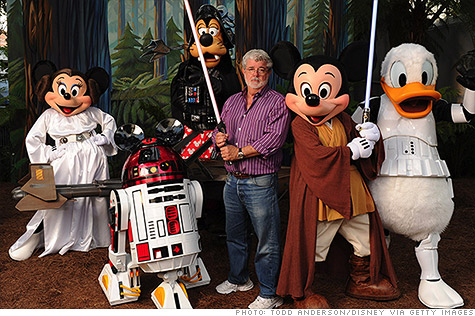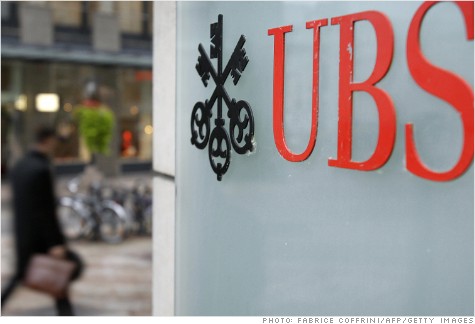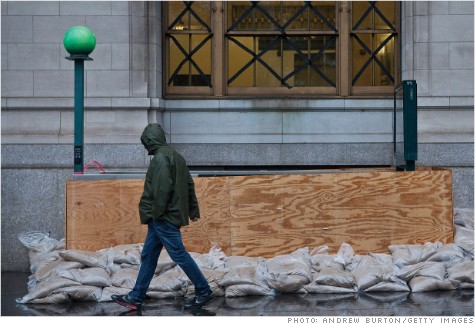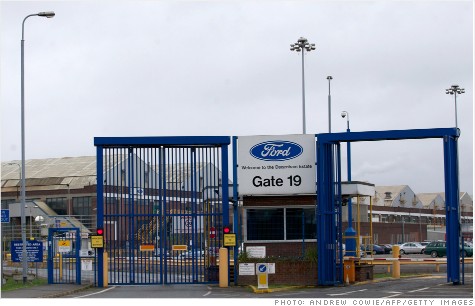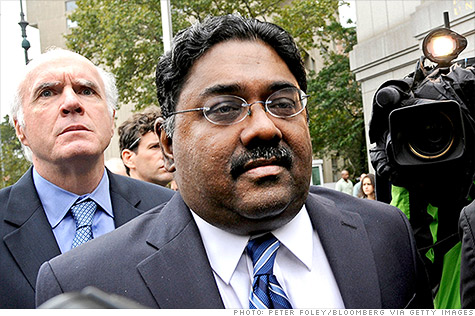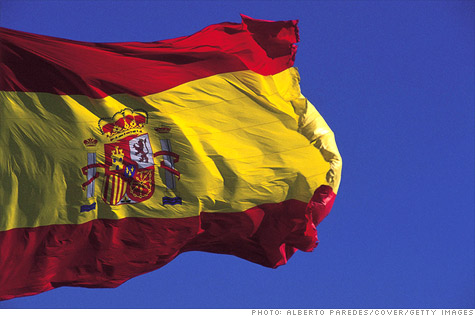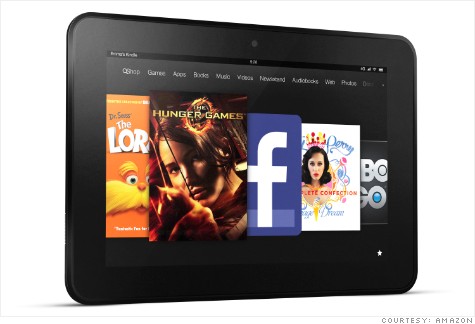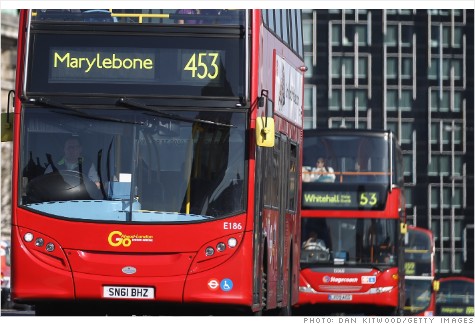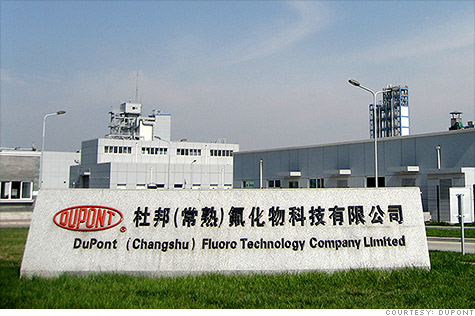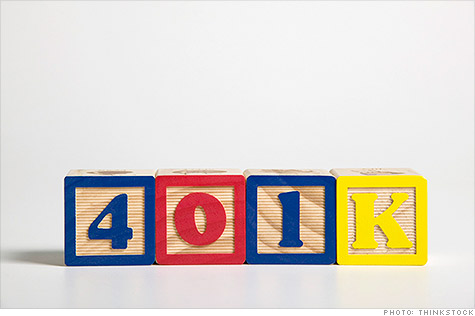
With a managed 401(k), you can leave investing decisions to the experts.
(Money Magazine) -- The 401(k) is the best tool you have to save for retirement, but it can be an awfully clumsy one.
In a typical plan, your employer essentially hands you a list of funds and says, "Here, you pick." Maybe you spend a weekend agonizing over whether to invest in this stock fund that looks for "opportunities for value," or this other one that goes after "emerging opportunities." (Both sound great!)
For some, fine-tuning a retirement portfolio becomes a fascinating pursuit; for most, it falls somewhere between tedious housekeeping and an anxiety-provoking puzzle.
The catastrophic market crash of 2008, which took the average 401(k) balance down by 30%, has done lasting damage to the confidence of savers. Even though the S&P 500 (SPX) had doubled from its low, only 14% of workers at the start of 2012 were very confident about their retirement prospects, compared with 27% in 2007.
So if you've thought about just throwing up your hands, you aren't alone. "People have been given a license for a machine they don't know how to drive," says David Booth, founder and co-CEO of Dimensional Fund Advisors, chatting at his firm's headquarters in Austin.
With $235 billion under management, Dimensional has quietly built a reputation as one of the most sophisticated fund managers in the business. Its low-cost index-like funds have acquired a mystique, in part because they are mainly sold to institutions and clients of fee-only advisers.
Now Booth wants to go after a much broader market of 401(k) savers. And he has a proposition that may surprise you: You should be able to all but ignore your portfolio.
The decisions you must get right are all about planning -- how much to save, how much income you'll need -- not investing.
Dimensional's Managed DC service, which was launched in the U.S. this summer, is an intriguing entry in a small but growing category of managed 401(k) plans. Competitors include the more established Financial Engines and a firm called Guided Choice, recently tapped by Schwab to offer advice built around the brokerage giant's index funds.
What all the services have in common is that they set up and run a portfolio for each participant in a 401(k) plan, based on his or her age, savings, and income goals. (You can use one of these programs only if your employer makes it an option.)
So when you log on to your plan's website, you won't be given a menu of funds you can move money in and out of. That part is out of your hands. Instead, you'll get online tools that help you see whether your contributions are likely to get you to the retirement you want, and warn you to increase your savings when you are at risk of falling short.
It remains to be seen whether over the long run a custom approach will improve 401(k) savers' outcomes. Still, the plans are worth your attention, because it's not just these businesses saying that the 401(k) needs fixing.
For years pension experts have worried that 401(k)s put too much emphasis on the investing process, do too little to help people plan for the income they'll need, and allow participants to be too aggressive during market rallies or too cautious after crashes.
Understanding the better mousetraps Booth and his competition are trying to build can teach you how to better save for your retirement, regardless of whether you are in one of these plans.
Here are four seriously bright ideas behind what just might be the 401(k) of the future.
BRIGHT IDEA NO. 1: You won't win by becoming a brilliant investor
It's not that owning good funds is irrelevant. Over the past 15 years, the best-performing large-cap stock fund beat the S&P 500 index by an annualized 6.2 percentage points. If you happened to pick that winner in advance, then, yes, that would have made a big difference.
Trouble is, over the past decade 60% of actively managed U.S. large-cap funds underperformed the S&P, according to S&P Dow Jones Indices. And the noise of the market often drives fund investors to buy and sell at the wrong times.
From 2000 to 2009 the average fund earned an annual 3.2%. Morningstar data show the return to the shareholders -- measured by tracking money flows in and out -- was about half as much.
You can work to getting better at investing, but the evidence is that this won't get you far. For some savers, farming out investment choices would be a relief.
"The majority of 401(k) participants are not particularly informed about investing decisions, nor are they very interested," says Christopher Jones, chief investment officer at Financial Engines.
For those used to playing a more active role, though, taking a hands-off approach might not be so easy. Managed plans are generally take it or leave it: You can't swap some of their picks for your own ideas. And you have to pay for the service. Some advisers charge up to 0.6% on top of fund costs; Dimensional uses its own broadly diversified portfolios and charges a flat 0.6%. (That's besides other possible 401(k) costs for things like record keeping.)
Related: Tips on planning for retirement
Although the managed services pick the funds you'll hold, Financial Engines and GuidedChoice do allow you to change your exposure to stocks depending on your comfort level. At the same time, their calculators instantly show how raising your risk could lower your income if markets are poor.
Dimensional takes a more radical approach: It never asks about your appetite for risk. It sets an asset allocation it calculates will give you the best shot at hitting your income goals -- a strategy that will vary depending on your savings and time to retirement.
Dimensional thinks risk tolerance is too wobbly a concept. When stocks soar, everyone has a stomach for risk; after losses, many aggressive investors realize that they want out.
"If people answered risk questionnaires accurately, no one would be in equities," says Michael Lane, head of Dimensional's retirement business. "We don't ask questions that at the end of the day don't matter."
Do it on your own: If you can't, or won't, turn over control of your money, train yourself to mess with it less often. One way to do that is to not stray too far from a moderate asset allocation, perhaps an age-based rule like 100 or 110 minus your age in stocks. That way when the market crashes, you're less likely to be gripped by an urgent need to act.
BRIGHT IDEA NO. 2: It's not about hitting "the number"
The way you measure success in a standard 401(k) plan is by getting as close as you can to a savings target, a.k.a. your "number."
Mathematically there's nothing wrong with setting a number. Psychologically, though, it's far too fuzzy: What looks like a huge stash may not be enough to produce the income you need. "Even $1 million doesn't go that far anymore," says Olivia Mitchell, a pensions expert at the University of Pennsylvania.
Following the popular 4% rule of thumb would leave you with an initial income of $40,000. Not bad, but even with Social Security thrown in, it may not be living large for someone with a six-figure income before retirement.
Related: Countdown to retirement
On the other hand, some online retirement calculators spit out targets so seemingly high that younger savers could despair of ever reaching them. "We need to get the focus off of cash piles and onto cash flows," says Alicia Munnell of the Center for Retirement Research at Boston College.
The new 401(k) plans constantly track your progress in terms of your likely income in retirement. For example, you might see a dollar range based on your current savings habits, planned retirement age, and Social Security benefit. They also help you estimate how much you'll need.
Dimensional, for example, separates that into two buckets: money you need to cover essential costs, like food and health care premiums, and funds for luxuries, such as an annual vacation. That distinction becomes especially important late in your career, as Dimensional decides how much risk to take with your portfolio. (See bright idea No. 4.)
If you have less than a 15% probability of achieving your desired income goal, Dimensional's software could even force you to alter your plan -- by saving more, for example, or accepting a lower future income or later retirement.
Related: Are you saving enough for retirement
But Sherrie Grabot, CEO of GuidedChoice, says that even the simple exercise of showing savers how much income their nest egg will probably generate is powerful. "People understand how much their monthly bills are," she says. "If the numbers don't match up, they know they can't afford to retire. They get it."
Do it on your own: Managed 401(k) plans generally try to get you to between 70% and 80% of your pre-retirement income, including Social Security.
The free Retirement Income Calculator on the website of T. Rowe Price sets a 75% goal, and is a good way to get a ballpark estimate. If you want to depend less on market fortunes, try plugging in a conservative portfolio, rather than T. Rowe's suggested allocation, and see how much you'd have to save to make that work.
BRIGHT IDEA NO. 3: And it's not about watching your balance grow, either
Another consequence of focusing on the pile of money is that checking your balance can make a bear market look like a much bigger setback than it really is, especially for savers 20 years or more from retirement.
Grabot says that stocks could drop 40%, but a younger saver might see only a 5% to 10% drop in his probable income. "That's a very different feeling," she says.
How can that be? First, the income you'll be able to tap in retirement is driven by more than your portfolio. There's also your Social Security, as well as interest rates, which affect the value of an income-producing annuity you might choose to buy when you retire.
Even more important for the young is the fact that the investment portfolio you have today is just a fraction of the nest egg you'll be building up with contributions over the rest of your career. And when stocks drop, that means your future contributions are actually buying more shares.
Do it on your own: If you are a couple of decades away from retirement, stay focused on the bigger picture during bear markets.
"You're getting stocks on sale," says Christine Fahlund, a senior financial planner at T. Rowe Price. As you get nearer to your retirement date, however, your balance -- and what you do with it -- will matter a lot more. Which brings us to the last bright idea.
BRIGHT IDEA NO. 4: Take money off the table when you hit goals
As you age, you know that you are supposed to reduce your exposure to equities. That is the key selling point of target-date mutual funds, which make this shift automatically for you. But they're a fairly blunt instrument.
"Reducing risk should not be about age only," says David Wray of the Plan Sponsor Council of America, a trade group for employers offering 401(k)s. "It should also be about the accumulation."
In other words, once you have built up enough to pay for certain key needs in retirement, why keep that money at risk?
Related: The truth behind target-date funds
Dimensional's approach to this question is unusual. Within 15 years of retirement, Dimensional looks at your bare-minimum income goal and starts shifting money into a separate bucket of investments that it calculates will provide a 96% chance of hitting that number. (Dimensional stresses that this is not a guarantee.)
Money beyond the essentials can be invested more aggressively. By retirement, much of the essential portfolio will be in funds holding Treasury Inflation-Protected Securities, or TIPS. That idea may be a tough sell these days, with Treasury yields still at crazy lows.
The problem is mitigated, however, for those who plan to put the money into an annuity at retirement, which Dimensional strongly encourages. If interest rates climb, the bond funds will take a hit to their returns, but payouts on annuities will also be higher.
Do it on your own: It's not easy to replicate a strategy like Dimensional's on your own. But thinking ahead about how you'll pay for your essential needs -- not the cruise you might one day like to take but the regular grocery shopping and property tax bills that can't be put off -- can help you avoid taking too much risk as you near retirement.
You could easily be retired for 20 or 30 years, so it may seem like you have lots of time to wait out a bad market and capture stocks' higher long-run return.
Once you've stopped working, however, a market drop will be devastating if you're suddenly forced to turn long-term investments into gas money.
"People have been focusing on the rate of return and how much they can accumulate," says Lane. That's what most 401(k) plans, with their emphasis on investments instead of planning to replace income, train you to do.
As you get closer to the end of your career, instead of counting on riding the bull to a successful retirement, you need to start thinking about how you'll break the fall should you get thrown. 
First Published: October 30, 2012: 2:13 PM ET
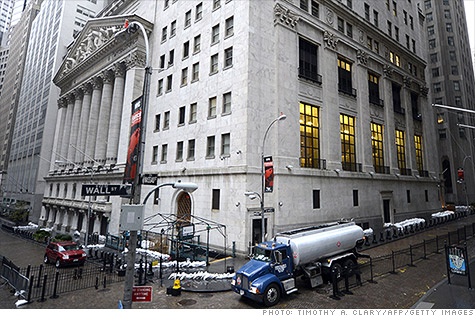
![]()

